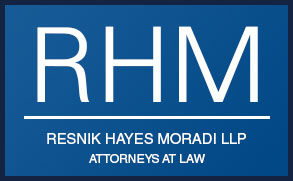When I explain Chapter 13 to clients, I usually describe the amount of general unsecured claims as being the size of the clients' “bucket” and I explain that their plan payments might fill 0% to 100% of the “bucket” during the plan, before the “b
ucket” is tossed out (discharged), with certain exceptions such as student loans, for example.
Section 109(e) provides a limit on the maximum size of the “bucket” for individuals and spouses. To be eligible for Chapter 13, debtor(s) must owe “on the date of the filing of the petition, noncontingent, liquidated, unsecured debts of less than $360,475…” This amount was set as of April 1, 2010 and is adjusted every three years. It applies uniformly accross the country, despite the significant variations in real estate values and amounts of home loans.
In depressed (or recessed) real estate markets, like now, it is common for debtors to use Chapter 13 to avoid junior undersecured home loans pursuant to 11 U.S.C. Sections 506(a) and (d). In states with relatively high real estate values, like California, junior home loans can be hundreds of thousands of dollars. If the avoided junior home loan increases the debtors' “bucket” size, then they often become ineligible for Chapter 13. As a practical matter, middle class consumer debtors are excluded from the more complicated and expensive Chapter 11 and must therefore surrender their homes.
Persuasive statutory and public policy arguments favor not counting undersecured junior home loans subject to 11 U.S.C. Section 506, in the 109(e) unsecured debt limit. Santos v. Dockery (In re Santos), Case Number 12-55145, is now pending before the 9th Circuit Court of Appeals seeking a ruling on this important consumer debtor issue.
On January 20, 2012 Santos appealed a District Court order affirming the Bankruptcy Court's order dismissing their case upon a finding that they were inelgible to be Chapter 13 debtors due to their unsecured debts being above the 109(e) unsecured debt limit. The Debtors had secured claims against their primary residence that were subject to 522(f) and 506 which were determined to put them over the limit. The Bankruptcy Court followed Smith v. Rojas, 435 B.R. 637, 649-650 (9th Cir. BAP 2010). The District Court read 109(e) as “noncontingent, liquidated and unsecured debts” rather than “noncontingent, liquidated, unsecured debts”, a subtle and significant difference from the plain language.




